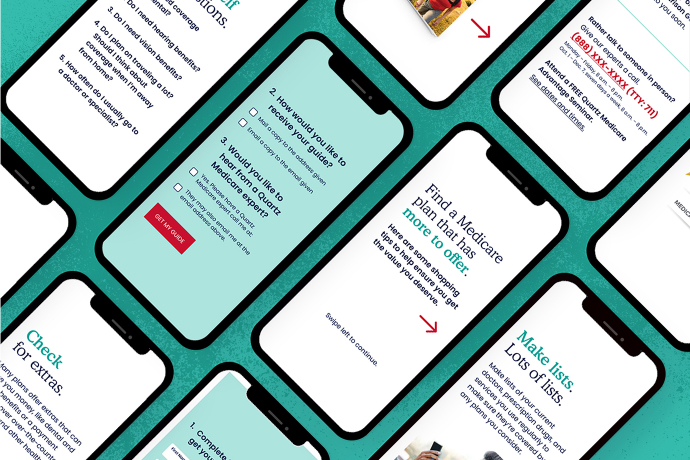How LLMs Can Turn Static Websites into Interactive Conversations

For decades, websites, especially non-ecommerce sites, have functioned as static, informational experiences — essentially digital brochures. These websites often require users to navigate through pages, hunting for the information they need. While user interface (UI) and user experience (UX) design have certainly evolved, making websites more visually engaging and easier to navigate, the fundamental approach has largely remained the same: users find content by following predefined paths.
However, Large Language Models (LLMs) have the potential to revolutionize this dynamic. When applied strategically, they can help marketers transform static information architectures into adaptive conversations that respond to each visitor’s specific needs in real time, moving beyond the one-size-fits-all approach.
The Rise of LLMs
At their core, LLMs are advanced AI models trained to understand and generate human-like language. By analyzing vast amounts of text, they can provide contextually relevant responses, generate content, and engage in meaningful conversations.
When thoughtfully incorporated into website experiences, LLMs can enable more dynamic, interactive, and personalized engagements that adapt to each user’s needs — a potential leap forward from today’s largely static, information-driven site structures.
With this technology, websites could one day engage users in real-time conversations that feel more like speaking with a human representative than browsing through pages. These systems can interpret user intent, ask personalized questions, and deliver relevant content instantly — dramatically reducing the time between question and answer.
Shifting from Segmented Journeys to 1:1 Journeys
For years, marketers have relied on segmentation — dividing audiences into personas based on demographics, behaviors, and needs. These journeys are built on assumptions about shared characteristics within each segment. While this approach has been effective at creating relatively custom journeys, it still requires users to fit themselves into predefined categories and navigate predetermined content paths.
LLMs introduce the possibility of a more nuanced approach. Instead of creating fixed paths for segments, marketers can deliver truly personalized 1:1 journeys, where each user experiences a customized flow. The website adapts to their specific preferences, behaviors, and needs in real time, with content that evolves based on individual inputs and actions.
Rather than forcing visitors to click through multiple pages or choose from broad categories, LLM-powered websites could provide a seamless, conversational flow. Users would interact naturally through dialogue, and the system could dynamically adjust to provide the most relevant information at each step.
Strategic Control Over Consumer Engagement
This evolution doesn’t mean brands lose control of their messaging. Executed strategically and with sophistication, marketers can still guide consumer engagement by training an LLM on a curated content set aligned with the brand’s desired information, tone, and objectives.
By using well-crafted prompts and conversational logic, marketers can steer users in ways that keep interactions consistent with brand standards while still offering personalization. The key lies in training the model to guide users naturally and intuitively, maintaining strategic control while creating highly individualized experiences.
In this model, each user receives responses tailored to their priorities, while the underlying system ensures every interaction reflects the organization’s defined parameters and messaging framework.
Leveraging Content Marketing for SEO and GEO
While LLMs enable more personalized, human-like interactions, websites still need to be discoverable. Traditional search engine optimization (SEO) remains essential for driving organic traffic. However, a newer practice — Generative Engine Optimization (GEO) — is emerging alongside AI-powered search tools.
GEO focuses on ensuring that content is structured, formatted, and presented in ways that generative engines and AI systems can interpret and surface effectively. This requires clear formatting, schema markup, well-defined data points, and comprehensive, up-to-date information that AI systems can accurately interpret and cite.
By developing high-quality, brand-aligned content, marketers can improve both SEO and GEO performance. Content should be relevant, well-organized, and optimized not just for traditional search engines but also for AI-driven discovery platforms. When content is discoverable and optimized for these systems, users can find it through both search and generative engines — and once they arrive, the experience can become highly relevant, interactive, and personalized.
The strategic takeaway: strong content marketing ensures discoverability, while conversational AI enhances engagement. Together, they form the foundation of the next evolution in digital experience design.
A New Standard for User-Centered Design
The transformation from static websites to conversational experiences represents more than a technological evolution — it’s a shift in how organizations meet audience needs. In regulated industries like healthcare, this shift requires not only personalization and control, but also a foundation of trust that ensures responsible, transparent interactions. Success will depend on balancing three key elements:
– Maintaining strategic control through curated content and brand guidelines
– Delivering personalized experiences that adapt to user context
– Ensuring visibility across both traditional and AI-driven platforms
LLMs give marketers the potential to create dynamic, deeply personalized digital experiences. Rather than forcing users to navigate through static content, websites can function as interactive representatives — offering tailored, real-time responses that users can trust to be accurate, transparent and appropriate for their needs.
The future of websites isn’t about creating journeys for segments; it’s about creating personalized experiences for individuals, while ensuring every interaction reflects the brand’s message and intent.






